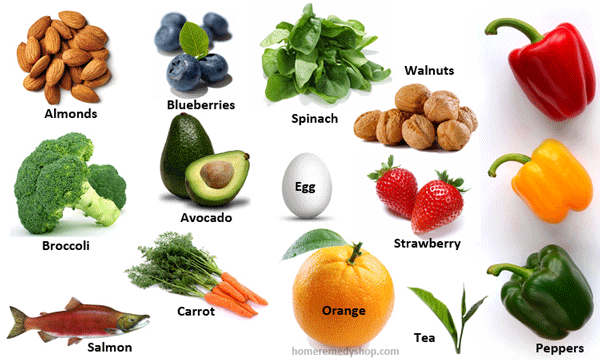- Aromatherapy for Weight Loss
- Fighting Obesity: The Role of Behavior, Biology and Bad Choices
- Fighting Obesity: Psyching Yourself to Act
- Fighting Obesity: Why Moving More is Crucial
- Fighting Obesity: Eating to Be Healthy and Lean
- Healthy Eating Tips
- Nutrition & diet information
- Diet Myths
Part 4 in a four-part series on obesity and weight loss
Everyone thinks that what you eat is key to controlling body weight. And that’s true … sort of. Americans are eating bigger portions and drinking more liquid calories than ever. There is no doubt that this bump in calorie intake has contributed to obesity.
But how many calories you burn every day can offset extra calories that you take in. And even though people may be eating more calories than they did 50 years ago, they are moving even less and therefore burning even fewer calories through activity than before sedentary, automated lives became the norm.
Studies on populations like the Amish and the Aborigines who don’t use much electricity have found that they move doing daily tasks for about eight hours a day. They aren’t training for marathons, but they are active during most waking hours. The point? It’s crucial that you move more all day, every day to offset what you eat.
Although moving more is the key message of this series, you do still need to watch what goes in your mouth. An excellent way to do that is to consume more good-for-you food. To do that it may be helpful to shy away from diet-think and look at what you eat from a whole new perspective…
A New Way to View Eating
One overlooked aspect of food you eat is its ability to nourish your body. So many people get fixated on how many calories or fat grams or carbs they take in that they fail to recognize what’s most important—whether they are getting the nutrients they need.
Every cell has a specific function. And how that cell operates depends on if it has vitamins, minerals and other biochemicals to help it do its thing. These are obtained or made from the food you eat. Sure, your body can cope when it doesn’t get everything it needs. But like a faulty engine or a leaky roof, it’s not working at its best and may eventually fall into serious disrepair.
Early signs that you may not be well nourished can be poor skin (acne, rashes, pale skin tone), slow healing, a tendency to bruise, headaches, feeling sluggish, cloudy eyes, poor memory and reaction times, heavy limbs and a multitude of other symptoms. If you don’t feel or look 100 percent, a major contributor may be a poor diet. You need to understand too that a vitamin and mineral supplement is not enough to cover your bases because there are nutritious components in foods that haven’t been identified by scientists yet. So you can still be missing out if you are not eating enough good food.
Eating Rules to Live By
You may be hoping for the perfect diet or eating plan. I’m not going to go into detail about calorie counting. Any diet will work in the short term. And whether a particular diet admits to it, all diets work based on cutting calories. But not all diets nourish you as they should.
Instead, you should “diet” without dieting by following five key principles for every meal. If you focus on nourishment rather than deprivation, over time, you’ll fuel your body with what it needs and automatically cut down on the bad stuff that keeps you fat. If you make these changes along with moving more, you will lose weight and you will keep it off forever..
Here are five eating rules to live by:
1. Eat as many veggies as you can.
Never limit your vegetables. Veggies have so few calories and are so ripe in nutrients and fiber that you should eat them at every meal, every day. Picture this: three giant dinner plates filled with 1 cup of broccoli, 1 cup of cauliflower, 1 cup of baby carrots, 1 cup of yellow squash, 1 cup of cucumbers, 1 cup of spinach, 1 cup of red peppers, 1 cup of tomatoes and one portobello mushroom … this heaping slab of vegetables has about 200 calories! Yet you could probably not eat all of it at one sitting—you’d be too full.
But you could easily drink one super-sized soda and take in almost three times as many calories, or eat a small cheeseburger and take in 400 calories. Add fries and a shake and you’d eat about five times as many calories as you’d get from that veggie smorgasbord . Get the picture? If you need to feel full when you eat, the key is to fill up with good stuff.
If you don’t find most vegetables appetizing, find some that you like. Or disguise them. Sprinkle grated cheese, olive oil, Tabasco, tomato sauce or pesto sauce on them. Even if you add a couple of hundred calories worth of a topping, you’ll still eat fewer calories in total than you would if you had a fast-food or processed-food item.
Throw extra veggies into everything you make at home: sandwiches, eggs, casseroles, burgers, pizza, soups, frozen dinners, pasta. If you eat out, always order vegetable side dishes or veggie toppings on pastas, pizza, sandwiches and burgers.
2. Drink no cal or low cal.
Liquid calories don’t seem to register as extra caloric intake in the body. As a result, your body doesn’t dial down how much you eat later, you simply store the extra calories from that soda as fat. So cultivate a taste for water to soothe your palate. Or unsweetened tea. Or add a splash of juice to a glass of water. If you knock out the sodas, juices, energy drinks, smoothies, beer, wine and coffee concoctions, you can save hundreds, even thousands, of calories every single day. Depending on how much you drink, if you simply switched to no-cal drinks, you could drop pounds in a matter of months.
3. Eat more fruit.
Several fad diets spread the nasty rumor that fruit is fattening. It’s not and you should eat as much of it as possible. Sure, any food calories add up. But find one person who got fat from eating too many oranges, bananas and watermelon. People get fat from eating too much fried food, fast food, sugar drinks and processed items. Eat fruit every day, every snack, every meal if you can. Eat it in place of a sweet snack, or halve your dessert and include fruit.
4. Eat more good fats.
Certain items like avocados, nuts and olives have a reputation for being fattening and so many people avoid them. Not a good idea. These contain fats that your body needs.
• Munch on nuts every day. Eight walnut halves, about a handful, have around 100 calories and lots of fiber. One candy bar has over 200.
• Snack on olives. Ten black olives have about 50 calories. One small order of fries has about 300. The olives have fewer calories but are mostly healthy unsaturated fat. The fries have more calories and are high in bad, saturated fat.
• Add avocados to dishes. Spread guacamole instead of butter on a piece of whole-grain toast: Yum! A half an avocado has 150 calories—and healthy unsaturated fat along with vitamins and minerals. Add an avocado to a tomato and basil salad along with a splash of olive oil, vinegar, salt and pepper and your dish is less than 200 calories. Compare that to a classic Cobb salad, which can be more than 600 calories and high in saturated fat.
5. Never skip breakfast.
Many overweight people eat late at night then wake up not hungry and skip breakfast. This is a recipe for overeating. If you fuel your body with small portions of food at regular intervals, you are less likely to get cravings and binge. Plus you are more likely to have less body fat since dramatic fluctuations in energy intake encourage your body to store more fat.
If you make these long-term lifestyle changes, which will improve rather than drastically alter the way you eat, you’ll feel better, get healthier and slim down.
Did you miss part of the series? Learn more about weight loss and obesity in the Fighting Obesity series:

